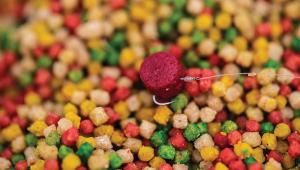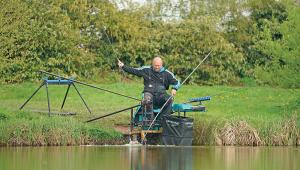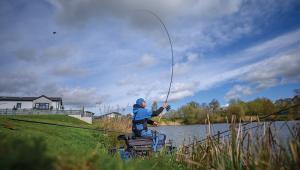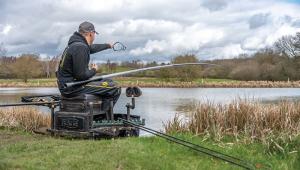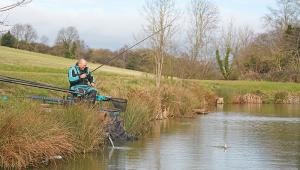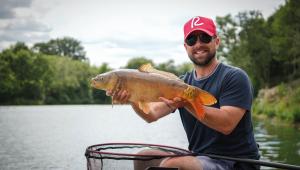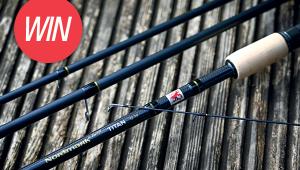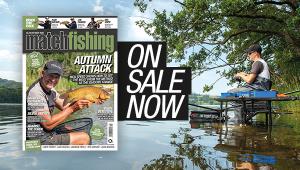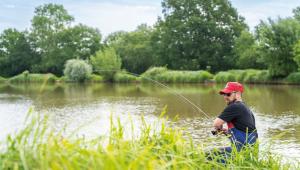The Big Step Up: Tackling Tidal Rivers
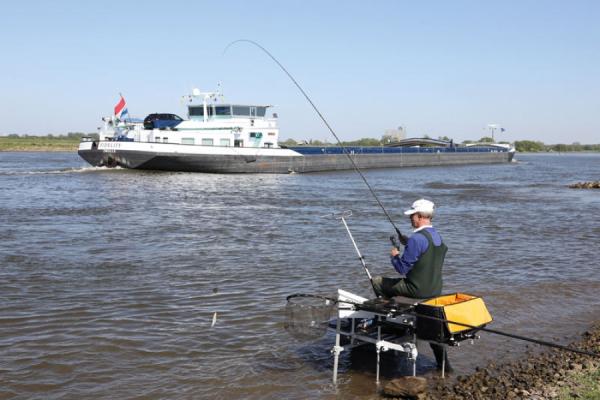
Growing up in and around the Norfolk broads, Octbox chief Rick Tyler thought he knew how to tackle rivers. That was until he found himself faced with the mighty River Ijssel…
The River Ijssel here in North Holland has to be one of my favourite river venues, and in truth it is unlike anywhere that you can really tackle on UK soil. It is perhaps best described as a much bigger version of the River Trent or River Yare, a massively powerful river with big shoals of hard-fighting fish.
The stretches that we fish are around the city of Zwolle, and here you regularly see ocean-going barges coming up and down the river, creating vast swills and waves as they past.
The Correct Setup!
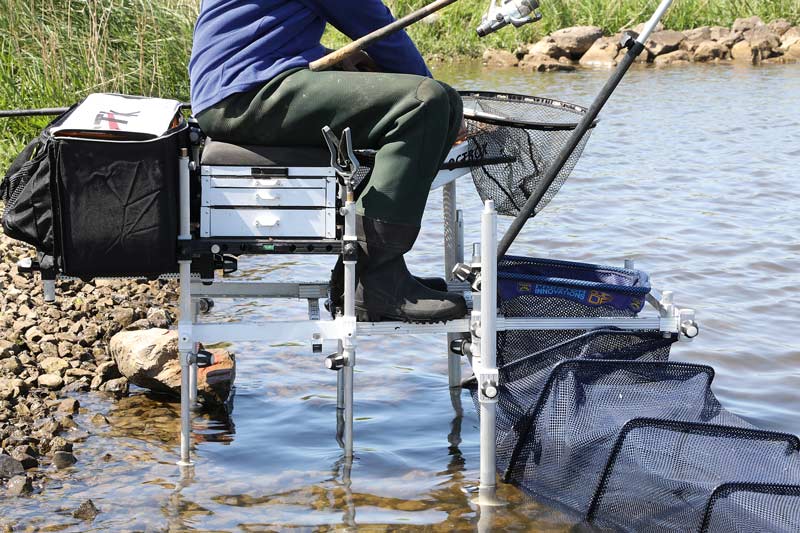
The first thing I must mention, for safety reasons, is you must think very carefully about your setup. I have seen boxes washed into the river here, and anglers washed off their seatboxes. Sitting in the water to fish might seem like a great idea when you arrive at your peg, but when a big barge comes past you can find yourself being battered by waves of over three feet in height.
So my first key piece of advice is to sit well back from the water, and set your box to a level where the wash from the boats will not affect you too much. Fishing the River Ijssel has had a massive effect on how I have designed the Octbox, not just for this reason, but also because the banks are stony, so a standard mudfoot is totally unsuited to this type of terrain. Instead, the pointed nature of the Octbox feet dig in between the rocks, or grip them much better than a flat plastic foot. If you do have a box with standard mudfeet, my best advice would be to try and lock them in place by leaning rocks up against them.
The next consideration is obviously your other tackle. I have my bait bag mounted on my bait waiter behind me so that I can reach around and get what I need at any point, while keeping it well out of the way of any wash or waves.
Although the bolo and pole do play a part in areas on here, the predominant method for me has always been the feeder. In such a powerful current, I believe that this is the best method for delivering a volume of particles where you want them to go, and accurately presenting your hook bait over the top.
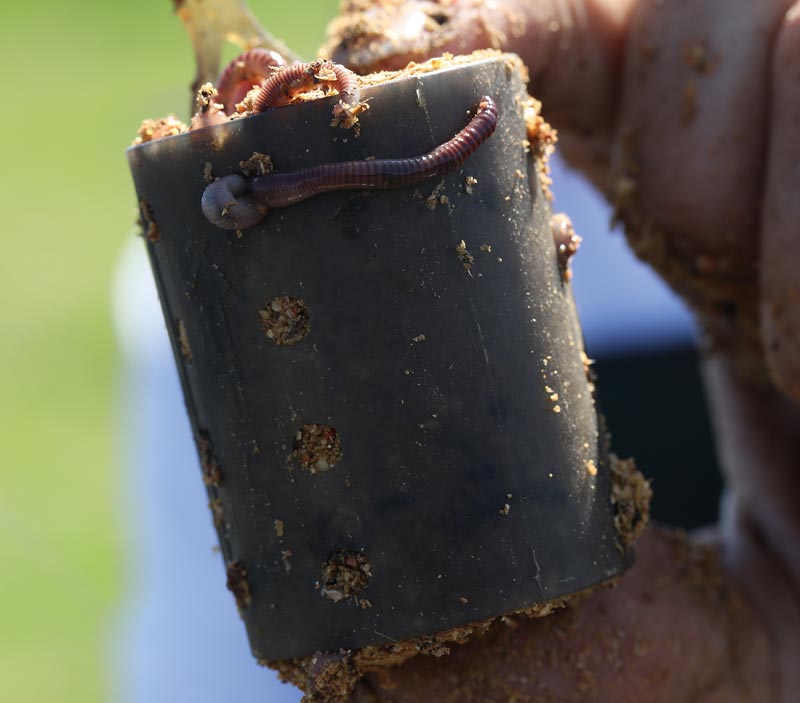
As you might imagine, this is no place for a delicate feeder approach though. Anything from 40g to 100g of lead is required, and my feeders are best compared to a small Coke can! Obviously, you have to match this sort of gear to an appropriate rod and reel, so I opt for an old Shimano Beastmaster (Heavy) and a Stradic reel.
One little edge that I do like to give myself though, given the immense power of the current, is the use of braid. I actually use 0.08mm braid, which cuts through the powerful water a lot better than the equivalent strength mono. One key quality of braid that you have to be mindful of, however, is its lack of stretch, which is where my elasticated feeder link comes in.
My rig is simply a paternoster, but instead of a loop or feeder link, I use a loop of purple Hydrolastic. This helps to cushion the weight of the feeder, and means that I hardly ever bump fish. Hook choice is a powerful square Gamakatsu pattern, to robust 0.16mm line. These are aggressive, hungry fish, so a 10in hooklength is all that is required, to keep the hook bait in close proximity to the feeder.
Given the beefed-up setup that I have just descirbed, you might be surprised to read that I only use a 2oz tip in my rod. This has nothing at all to do with bite detection in terms of seeing indications and striking. Every bite you have on such strong gear in a powerful current like this will hook themselves. The key is seeing when they do this, and actually remembering not to strike, as this can often bump fish off.

I like to hit my clip, then follow the feeder down with the rod. Once my feeder has settled, I tighten up so that there is a slight bend in my tip. This way, when a fish picks up the bait and dislodges the feeder, I see an instant indication on the tip. Then it’s just a case of picking the rod up and winding in.
Keep Feeding
The vast majority of the fish in the Ijssel move and feed in shoals, and as such you can never be sure what you are going to catch on a given session. I have seen massive weights of ide, bream, roach and barbel win matches here. I have even seen pegs catch big weights of barbel one day, and big weights of bream the next. These aren’t fish that are resident in any one area, they move around a lot, so the key is to set a trap, feed it positively and be as efficient as you can when they arrive so that you catch as many as you can in the time frame available.
Holding big shoals of fish means one thing to me – lots of particles! I bring four pints of hemp, plus four pints of casters and a couple of pints of corn with me on every session here. These all go in a tub and are mixed together, then kept in water to keep the bait fresh and sinking. Groundbait is only really used to plug the feeder and ensure that my bait gets down to the bottom.
To build up this bed of particles, I cast every couple of minutes. If you are going to get a bite you generally find that it comes fairly quickly after casting, so there really is no point in leaving your feeder in the water too long. Sometimes, you will find you cast regularly and catch nothing for a long period of time, but at least you know that by feeding particles aggressively in this manner you give yourself the best chance of holding the fish when they rock up.
On the subject of bait, one thing I would say is that it pays to avoid feeding worms on here. They are a great attractor, but because they are so light it only takes one big boat and they can be washed out of your peg, taking the fish with them. That said, I will often try fishing a piece of worm on the hook, and this can be deadly on its day. A couple of white maggots is generally my hook bait of choice, though.
Today has perhaps been typical of the Ijssel, in that the early part of the sessions has been spent building up my peg, but only catching the odd fish. Still, most were good ide over 1lb so I wasn’t complaining. From 2pm onwards some fish rocked up in numbers though, and I caught some big ide, good skimmers and a bonus 5lb bream in rapid succession.
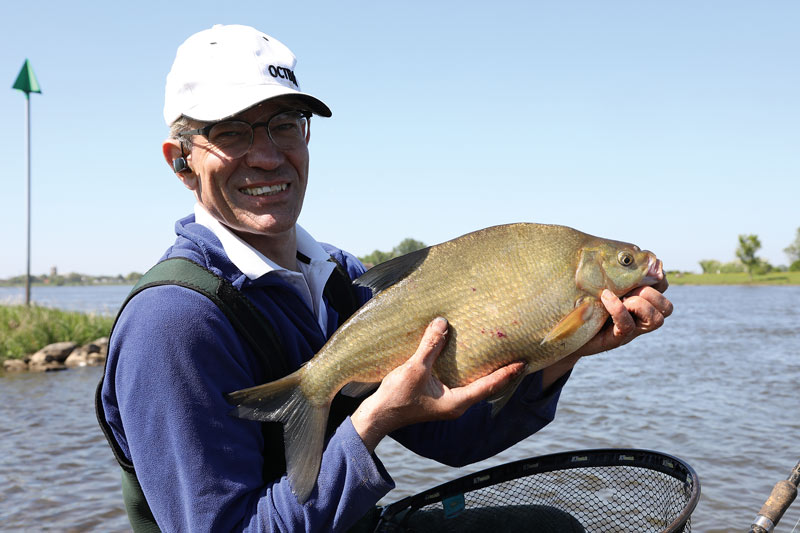
With around 30lb of these fish in the bag, the inevitable happened – the shoal filled up and moved off to give some excitement to the anglers below me. When this happens, it is just a case of building your peg up again, casting regularly, so that when the fish do arrive there is plenty of the bait on the bottom waiting for them.
I hope this piece has given you an insight into what I believe to be one of the most beautiful rivers in Europe. If ever you are in the area, I would urge you to give it a go.
Angler File
Rick Tyler
Age: 52
Lives: Germany
Sponsor: Octbox
Venue File
River Ijssel, Mad German stretch, near Zalk. A Dutch national licence is required to fish here, and is obtained from the Tourist Information Centre in Hattem. No additional permits are required to fish the Ijssel or Zalk.
- Log in or register to post comments
